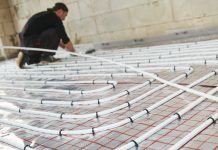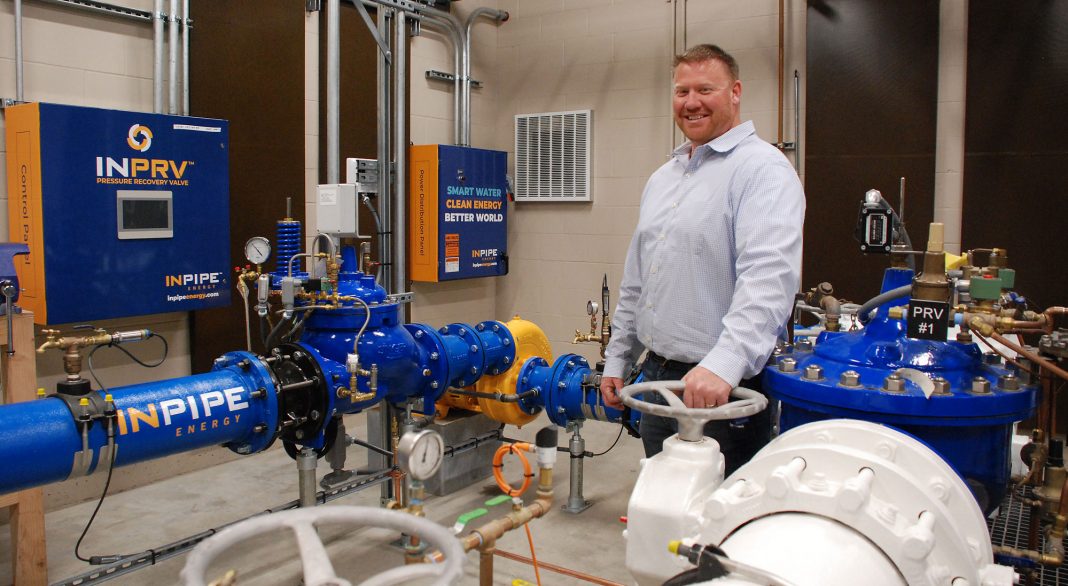With roots deep and wide across western Washington, Puget Sound Energy (PSE) is committed to the well-being of the people it serves. And, the company knows how to partner with other entities to make local communities better places to live and work. From empowering employees to build homes for Habitat for Humanity to granting funds to nonprofits helping residents through the pandemic, PSE finds ways to live up to its “be a good neighbor” goal.

It’s second nature for PSE to partner with its business clients as well. That’s the charter of the Business Energy Management group headed up by Corey Corbett. He and his team create incentive programs for organizations in Skagit County to implement energy efficiency measures. Considering PSE’s goal of net zero carbon emissions by the year 2030, strong partnerships are critical.
The Business Energy Management group works with clients large and small. Initiatives can be as simple as replacing lighting with LEDs or as complex as a complete industrial building retrofit. With partners ranging from hospitals to grocery stores, “each solution has to be custom,” Corbett points out. “We tailor the projects to be unique to the diverse types of customers we have.”
A Project for Skagit PUD
The chance to harness formerly wasted energy is an especially appealing notion for the Skagit Public Utilities District (PUD), one of PSE’s business customers. Also working hard to “go green,” the operator of the county’s largest water system had been exploring how to take advantage of the power of gravitational water flow for years, according to Kevin Tate, Skagit PUD community relations manager. “We had looked at implementing some micro hydro projects, but they just didn’t pencil out.”
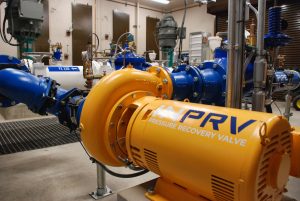
But a few years ago, when the PUD planned to upgrade its six-million-gallon reservoir and pump station on East Division Street in Mount Vernon, the opportunity was right. The infrastructure at the site includes a pressure reduction valve needed to regulate the intensity of water flow. This one and others throughout the system ensure customers “don’t blow up all the plumbing in their house,” says Tate.
The PUD learned about new technology from InPipe Energy that would accomplish two goals:
- Help manage pressure in the pipe leading to the reservoir, and
- Turn the pressure into carbon-free power.
The proposed unit, called an In-PRV, combines microturbines, control valves and piping—components safe to use in water pipelines—with state-of-the-art software. It converts excess water pressure into clean energy. Other benefits of the technology include reduced operational costs at the East Division Street station and improved system longevity.
Funding the Project
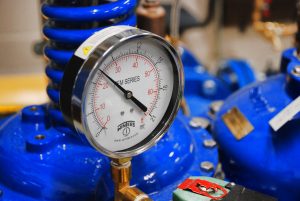
As a nonprofit whose values include environmental stewardship, the PUD was eager to get the In-PRV installed. The initial price tag of more than $300,000, however, wasn’t one the utility could handle alone.
Fortunately, the project fit PSE’s Business Energy Management partnership model quite well. “Water utilities use a lot of energy,” Corbett notes. PSE strives for close relationships with customers to help them realize operational efficiencies and lower costs, ultimately benefiting thousands of customers across the region as well as the environment.
Piggybacking a few sources of funding including a PSE grant, a contribution from InPipe and Skagit PUD’s own resources made the project happen. “We really appreciate that PSE was willing to step in and help offset the installation costs,” says Tate. It was a move in-line with both organizations’ mission, vision and values.
Current and Future Value
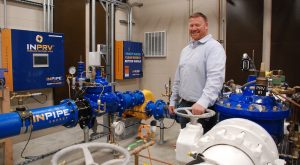
The In-PRV unit is up and running—the first of its kind in Washington State. It generates about $11,400 in electricity Skagit PUD can sell back to the grid each year. “That’s enough to power up to 10 average homes in Mount Vernon,” Tate notes. As a nonprofit, the utility can put the money saved back into covering operational costs. The PUD is already looking at other opportunities in the system to make use of energy currently being lost via pressure relief valves.
Harvesting energy through in-pipe technology, such as Skagit PUD’s In-PRV, is a relatively new concept. “I’ve seen one or two others,” remarks Corbett. Technology and installation costs should go down over time, he believes. “There’s some potential to reduce energy use across PSE’s entire 6,000 square mile service area by working with other water utilities.”
It’s PSE’s goal to reduce carbon emissions to net zero within this decade and hit the “carbon free” mark in 2045. Working with clients to harness formerly wasted energy is one good tool for getting there.
Sponsored



